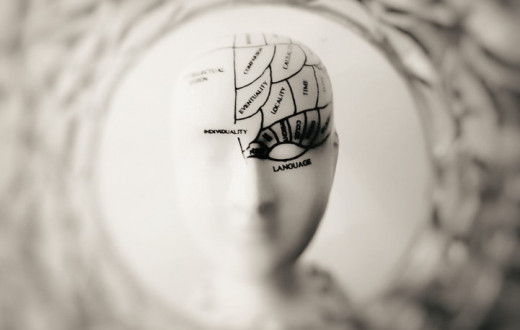By Denise Everheart | Posted on : December 22, 2020
Looking for an easy guide to the world of breathwork? You are in the right place and you’re not the only one! Over the past 5 years, Google has seen a 550% increase in searches for breathwork! Let’s sort out everything from the types and benefits to where and how you can learn the breathwork technique that best fits your needs. Let’s take a deep breath in...and let it go...
Topics covered:
- What is breathwork and why is it so powerful?
- What is the science behind breathwork?
- Which breathwork is best for physical health?
- Which breathwork is best for mental health?
- Can breathwork help with spiritual well being?
- Is breathwork the same as meditation?
- What is SKY Breath Meditation?
- How can I learn SKY Breath Meditation?
Why breath? What is it about the breath that makes it more than just a function that keeps us alive? The breath is the bridge between the mind and the body.
How we feel physically and mentally affects how we breathe. If we are anxious our breath is shallow and more rapid. And if we are relaxed our breath is elongated and soft. And amazingly, the reverse is also true. How we breathe can have an effect on our emotions and our overall health.
Another little known aspect of the breath is that it is the main vehicle for accessing prana- subtle life energy that is present in the air we breathe. Prana, a Sanskrit term, is responsible for how we think and feel. Even health conditions can be linked to a lack of prana. This is how important our breath is!
What is breathwork and why is it so powerful?
Breathwork may seem to be the ‘new kid’ on the block when it comes to self-care, but breathwork in various forms has been around for thousands of years. Originating in the east, breathwork has its roots in yoga and is known as pranayama.
Pranayama is two Sanskrit words combined- prana, and yama which means to control or ‘house’. Pranayama techniques vary in:
Shape (typically squares or circles)
Count (as in how long to breathe in, hold the breath and exhale)
Patterns
Level of physical effort
Using natural or modified breath
Rhythm
These variations of breath use both the physical mechanisms of the body and the power of prana to release toxins and stress while supplementing and strengthening our mind/body complex. Or more simply put- in with the good and out with the bad!
To better understand the power of your own breath, check out NYT’s best selling author, James Nestor’s book- BREATH, The New Science of a Lost Art.
What is the science behind breathwork?
Breathwork is gaining more respect as the science of breath catches up to what yogis have known since the beginning. Research studies are looking at everything imaginable. Some health benefits include alkalizing your blood PH, has an anti-inflammatory effect, elevates your mood, and increases muscle tone. And according to Yoga Journal, mindful breathing can contribute to happiness and emotional stability, weight loss, better exercise stamina, and longer life.
Did you know that how you breathe can also directly affect how your nervous system functions? For instance, when you are stressed and breathing in faster or shallow breaths- you are stimulating the sympathetic nervous system. This is known as the “fight or flight” response. On the flip side, when you are breathing in slow, deeper breaths you are stimulating the parasympathetic nervous system. This is known as the “relaxation response”.
Let’s take a look at specific health benefits according to three areas: physical health, mental health, and spiritual wellbeing.
Which breathwork is best for physical health?
Although pranayama/breathwork has benefits for both the body and the mind, there are some breathing techniques that are more focused on physical benefits. Here are 4 breathing exercises and how they impact the health of your body.
Square breathing. Also known as box breathing, this breathwork practice can regulate the autonomic nervous system, lower blood pressure, and help with insomnia. Square breathing is also known for its calming effect. Here is an easy video demonstrating square breathing.
Bellows breath. This breathwork practice uses deep breathing and energizes your whole system while expelling toxins and expanding lung capacity. Bellows breath, called bhastrika in Sanskrit, is also a great tool for mental focus. You can learn Bellows breath for free by attending a free introductory breath and meditation online session, Beyond Breath.
Skull shining breath. Kapalbhati in Sanskrit, skull shining breath tones, and cleanses the respiratory system, increases metabolism, tones abdominals, improves digestion and nutrient absorption, and improves circulation. Skull shining breath is also an instant mental refresher. To learn more about skull shining breath click here and view a how-to video, click here.
3-stage breathing. This breathing technique expands the lung capacity strengthening the lower, middle, and upper lobes of the lungs. Typically, only athletes have stronger upper lobes. This breathwork experience also prepares the mind for meditation. 3-stage breathing is taught in the SKY Breath Meditation workshop.
Which breathwork is best for mental health?
Instinctively we know that mental calm is just a breath away! Here are 5 breathwork techniques that are known for their effect on our mental well being.
Straw breath. Also known as ‘pursed lip’ breathing, straw breath has an immediate effect on an anxious mind while also reducing too many thoughts. It can help lower blood pressure, though not a substitute for medication. Read here for full instructions and an easy-to-follow video.
Diaphragmatic breathing. Belly breathing is known for its relaxing effect. This breath can also help to lower blood pressure in the moment. This link has how-to instructions.
Alternate nostril breathing (ANB). The Sanskrit name for ANB is Nadi Shodhan. ANB calms and centers the mind, brings the mind into the present moment and out of the past or future. ANB is also therapeutic for the circulatory and respiratory systems. For more information, including an instructional video click here.
Bee breath. This breath also has a Sanskrit name- Bhramari. Bhramari releases agitation and frustration and reduces anxiety creating a calmer more focused mind. Students find this breathwork helpful. This video teaches you how to do bee breath.
Victory breath. Ujjayi breath has many names- victory breath, ocean breath, even Darth Vadar breath. It is called victory breath because practicing ujjayi breathing gives you victory over your mind and too many thoughts. The main benefits of ujjayi breath are fewer thoughts and better sleep! Check out: Can’t Sleep? Try this Ujjayi Breathing (video Included) and Sleep Deep.
Can breathwork help with spiritual well being?
Yes! Spiritual wellbeing can simply mean nourishing the human spirit. And breathwork can affect even this most subtle aspect of ourselves. Imagine feeling renewed life satisfaction, contentment and inner peace, joy, enhanced optimism, and serenity! These deeper experiences are definitely possible with SKY Breath Meditation.
Is breathwork the same as meditation?
What is the difference between breathwork and meditation? Breathwork is a tool for meditation, but can also be very meditative itself. Since the breath is the bridge between mind and body, breathwork gives the signal- time to settle down and be present. In that present moment, you can discover a great depth within yourself. This is the door to effortless meditation. You just need to open the door using the breath.
Meditation is that experience of doing nothing, completely letting go, and swimming in that inner space.
What is SKY Breath Meditation?
SKY Breath Meditation uses a specific breathing pattern that opens the door to effortless meditation. Recent research from Yale showed that SKY improved student’s mental health including depression and social connectedness. And the Harvard Journal of American College Health found SKY to give improvements in wellbeing and cardiac metrics of stress. In fact, 100+ studies found these benefits:
SKY physical health benefits include:
Healthier blood pressure
Enhanced deep sleep
Releases trauma and reduces PTSD
Improved respiratory function
Increase immunity
Reduction in stress hormone's
SKY mental/emotional/spiritual benefits include:
Significant decrease in depression and anxiety
Greater mental focus
Reduced addictive behaviors
Healing emotional scars
Increased life satisfaction and optimism
Increased contentment and joy
Expanded awareness/mindfulness/consciousness
How and where can I learn SKY Breath Meditation?
Learning SKY Breath Meditation has never been easier with online workshops happening in every time zone, no one is too far away to attend. In just 9 hours over 3 days, you can learn SKY from the comfort of your home. Here is the link to choose your dates, time zone, and instructor.
Want to know more about SKY? You can attend a free Breath and Meditation online session, Beyond Breath. A live instructor will teach you how to do Bellows breath and lead a guided meditation. You can also get answers to your questions about SKY.
Ready to begin your breathwork journey? Now you can start a breathing practice today and begin enjoying all the benefits for your mind and body, and spirit too!
Denise Everheart is a freelance writer, breath meditation coach, party planner, and recipe designer. Follow her @everheartstudio4meditation and @celeplateyourlife on Instagram.
Disclaimer: This content on the Art of Living Blog is not intended to be a substitute for professional medical advice, diagnosis, or treatment. Always seek the advice of your physician or other qualified health providers with any questions you may have regarding a medical condition, Any links to third-party websites are provided as a convenience only and the Art of Living Blog is not responsible for their content.



























